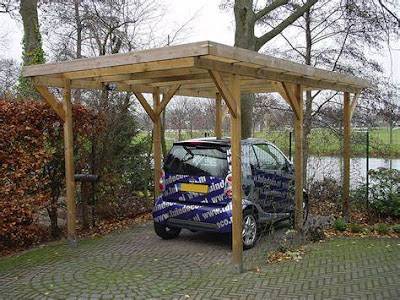If you're in need of extra covered space on your property but don't want to attach a structure to your house, a free-standing lean-to can be the perfect solution. Whether you want to create a sheltered area for outdoor activities or need a storage space for your gardening tools, a free-standing lean-to offers flexibility and functionality. In this article, I will guide you through the process of building a free-standing lean-to, allowing you to expand your living space in a practical and cost-effective way.
Step 1: Choose the Location
The first step in building a free-standing lean-to is to select the ideal location on your property. Consider factors such as accessibility, sun exposure, and the purpose of the structure. Ensure that the ground is level and clear any debris or obstructions in the chosen area. It's also important to check local building codes or restrictions that may apply to the construction of a free-standing structure.
Step 2: Gather the Materials
Before starting the construction, gather all the necessary materials. Here's a list of the items you'll typically need:
- Pressure-treated lumber for the frame
- Roofing material (such as metal sheets or shingles)
- Plywood for the roof and sides
- Nails or screws
- Concrete mix for the footings
- Tools: measuring tape, circular saw, hammer, drill, level, ladder, and safety equipment
Having all the materials on hand will help streamline the construction process.
Step 3: Build the Frame
Start by constructing the frame of your free-standing lean-to. Begin with the two end walls by cutting and assembling the pressure-treated lumber according to your desired dimensions. Use a level to ensure that the walls are plumb and secure them to the ground using appropriate anchors. Then, connect the end walls with the roof trusses, making sure they are evenly spaced and properly secured.
Step 4: Install the Roof and Sides
After the frame is in place, it's time to install the roof and sides of your free-standing lean-to. Attach plywood sheets to the roof trusses, ensuring they are securely fastened. Consider adding a slight slope to allow for proper water drainage. For the sides, you can use plywood, lattice panels, or even screens, depending on your preferences and intended use. Secure them to the frame, making sure they are sturdy and weatherproof.
Step 5: Add Finishing Touches
Once the main structure is complete, you can add finishing touches to enhance the functionality and appearance of your free-standing lean-to. Apply a weather-resistant sealant or paint to protect the wood from the elements. Consider adding gutters to collect rainwater, shelves for storage, or lighting for convenience. These additional features can make your lean-to even more versatile and user-friendly.
Remember, safety should always be a priority during construction. If you are unsure about any step of the process, consult with a professional or seek expert advice.
Congratulations! You have successfully built a free-standing lean-to. Now you can enjoy the additional space and utilize it for various purposes.

0 comments:
Post a Comment
Note: Only a member of this blog may post a comment.